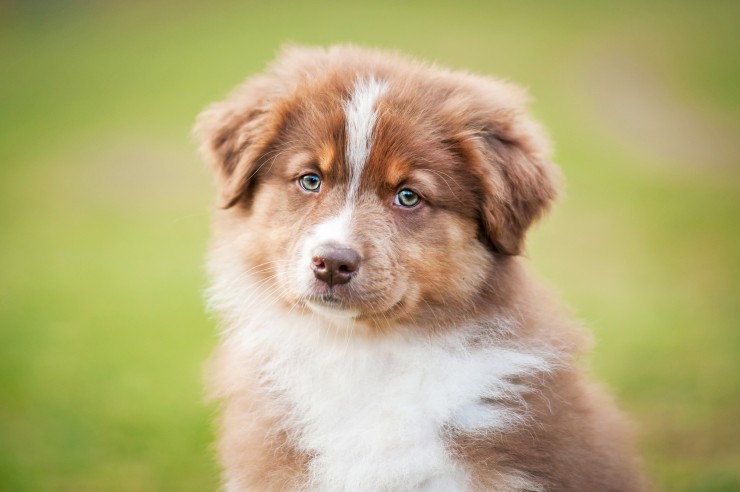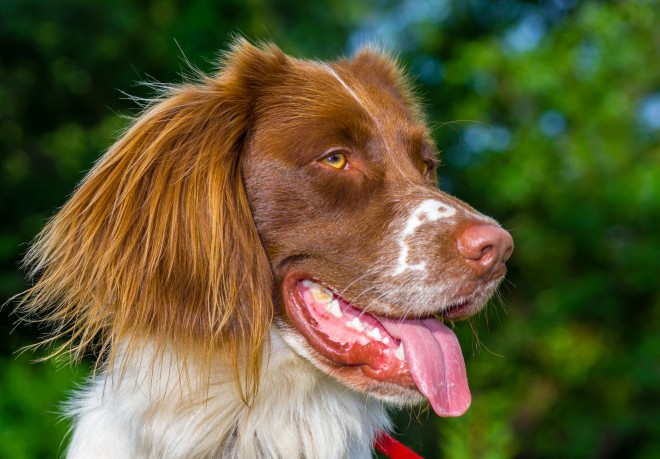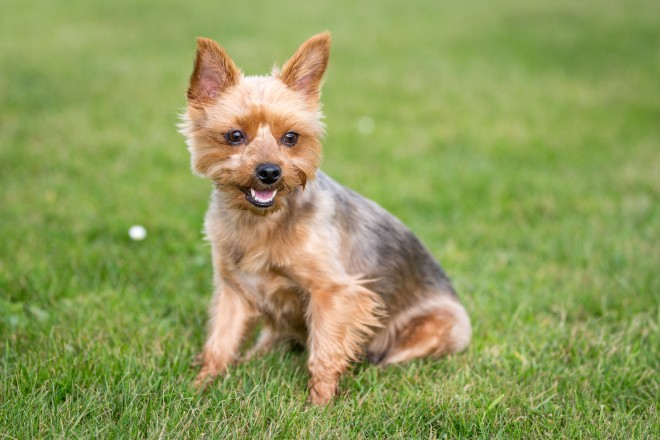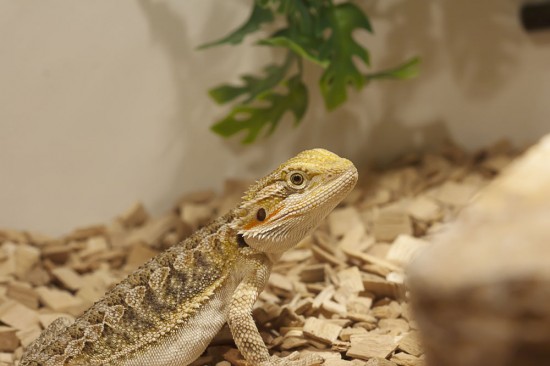
The Saint Bernard is considered to be a giant dog, with weights of up to 200 or more pounds. This is a very muscular and strong dog. The dog will measure 27 to 32 inches at the shoulder with the bitch 26 to 29 inches. The coat of the St. Bernard comes in two types, rough or smooth. The rough coat is longer than the smooth, but tends to lie fairly flat. The color of the coat is usually red, black, or mahogany with white. It is claimed that the dog has the ability to sense impending avalanches. The Saint Bernard will live from 8 to 10 years. The St. Bernard is also known as the Alpine Mastiff, the St. Barnhardshund, and the Bernhardiner.
History: Monks began breeding the Saint Bernard over 1000 years ago in the Swiss Alps. It is thought that the monks bred the Great Pyrenees, Great Dane, and Tibetan Mastiff together to get the St. Bernard. The hospice was near the treacherous pass of Saint Bernard where travelers were often stranded during winter snow storms or in avalanches. Working in packs, the dogs would sniff out people buried in the snow, dig them out, then attempt to warm them by lying down on them. One of the dogs would then go back to hospice to alert the monks and a rescue team would be dispatched.
Temperament: The Saint Bernard is a dog that attaches itself closely to its human family. This breed is known for being gentle and patient, especially with children. As with most members of the Mastiff group, this dog loves children. This is not a fast moving dog, but tends to move slowly. As with all large breeds, however, the St. Bernard should be socialized with people and other animals from an early age. Although it is not an aggressive dog, the St. Bernard will serve as a guard dog for the family.
Health Issues: The Saint Bernard is subject to various health problems including hip dysplasia and entropion of the eye. Stomach torsion, or bloat, is also fairly common so smaller meals served several times a day are recommended. If the dog does experience bloat, it must be taken to the veterinarian immediately for treatment. Heart problems can also surface in the St. Bernard as can tumors and skin allergies.
Grooming: The Saint Bernard, regardless of the length of its coat, will benefit from a weekly brushing. During the twice yearly shed, additional grooming may be necessary. Shampoo only when absolutely necessary to retain the coat's natural oils. Ears should be checked daily for any sign of infection. As the St. Bernard is a drooler, especially after eating or drinking, have a cloth ready to tidy up. The eyes of this dog should be kept clean and free of any kind of irritating substance.
Living Conditions: Although some St. Bernards are still used for rescue work, the majority of them are companion dogs. This large dog can actually be happy in an apartment as long as it receives enough exercise. The St. Bernard loves to be around its human family and enjoys being outside with them. It does not do well in hot weather and is actually hardy enough to live outdoors, even in the winter. Remember, though, that this a very people-oriented dog and will want to be with the family as much as possible.
For more information on Saint Bernard Dog Breed, Dog Training methods and Teacup Puppies for sale including Yorkies, Chihuahuas and Morkies Please visit my websites below. PUPPIES OR DOGS PUPPIES for SALE
 Identifying And Diagnosing Canine Herpesvirus In Puppies
Identifying And D
Identifying And Diagnosing Canine Herpesvirus In Puppies
Identifying And D
 Which Breed Of Spaniel Would Suit Your Lifestyle Best
Which Breed Of Sp
Which Breed Of Spaniel Would Suit Your Lifestyle Best
Which Breed Of Sp
 Yorkshire Terrier Health Testing And Genetic Diversity
Yorkshire Terrier
Yorkshire Terrier Health Testing And Genetic Diversity
Yorkshire Terrier
 Treating Mites In Pet Reptiles
Treating Mites In
Treating Mites In Pet Reptiles
Treating Mites In
 Yorkiepoo, Yorkapoo, Yoodle ... A Unique Mixed Breed Dog
Yorkiepoo, Yorkap
Yorkiepoo, Yorkapoo, Yoodle ... A Unique Mixed Breed Dog
Yorkiepoo, Yorkap
Copyright © 2005-2016 Pet Information All Rights Reserved
Contact us: www162date@outlook.com